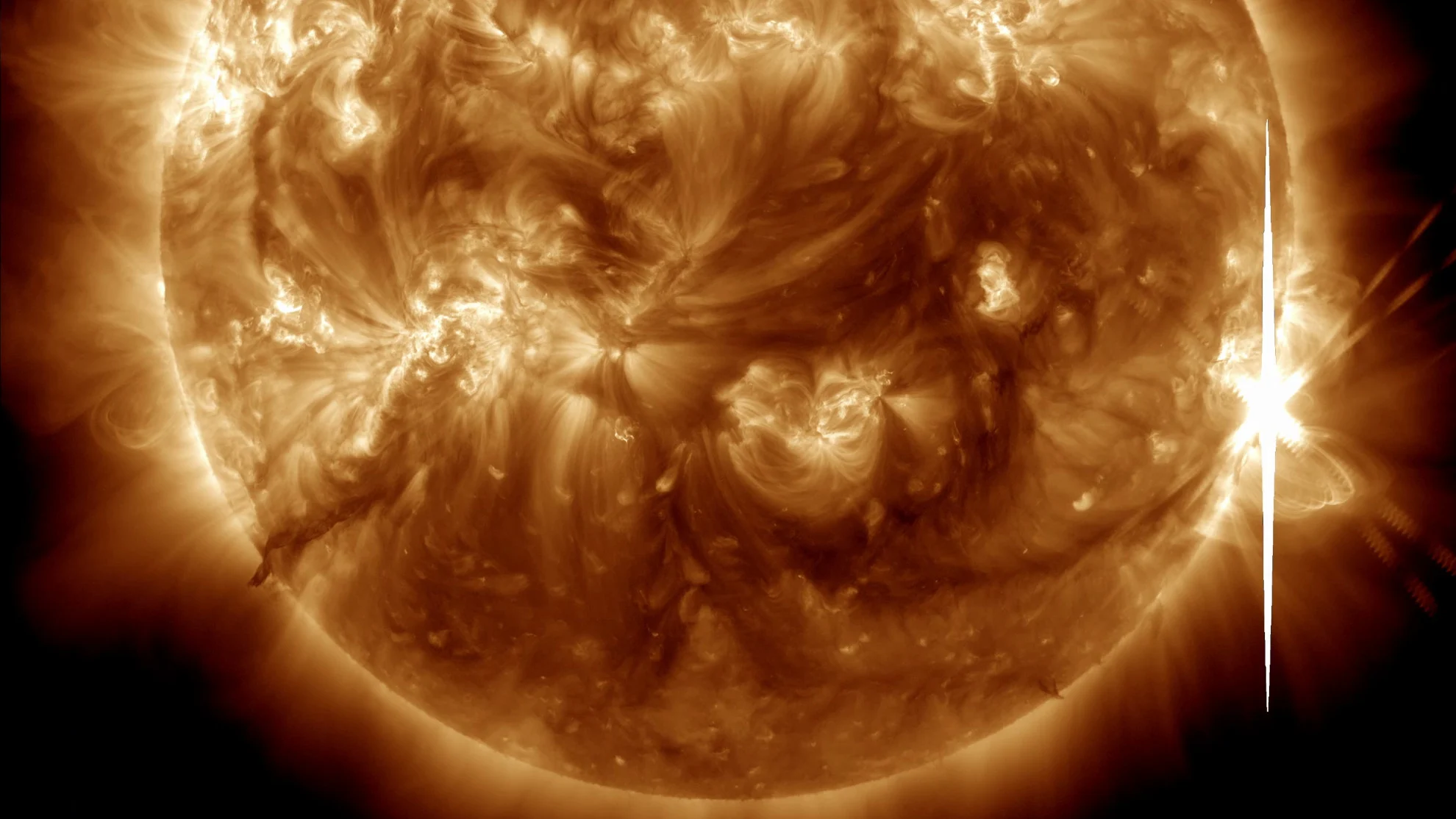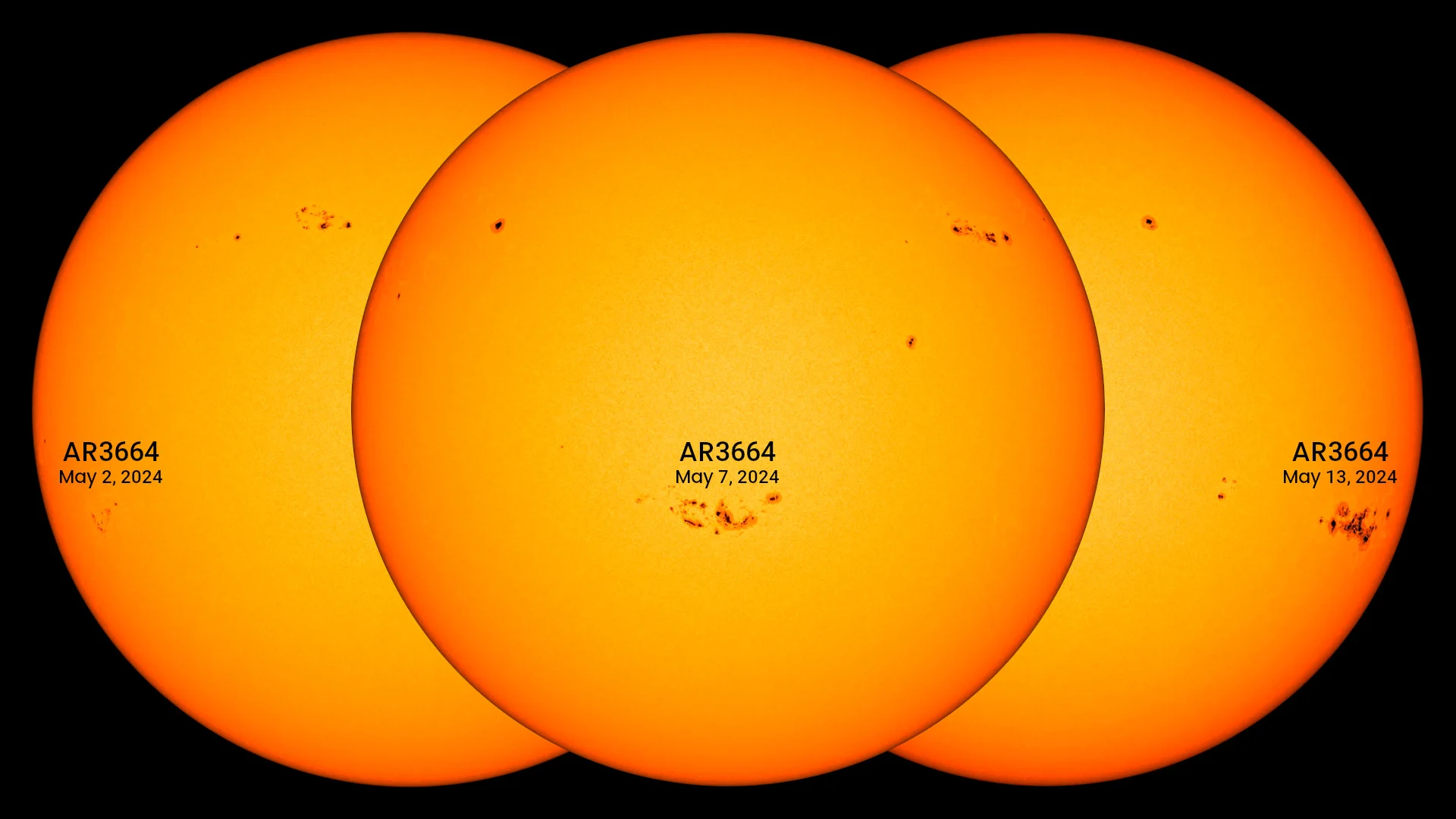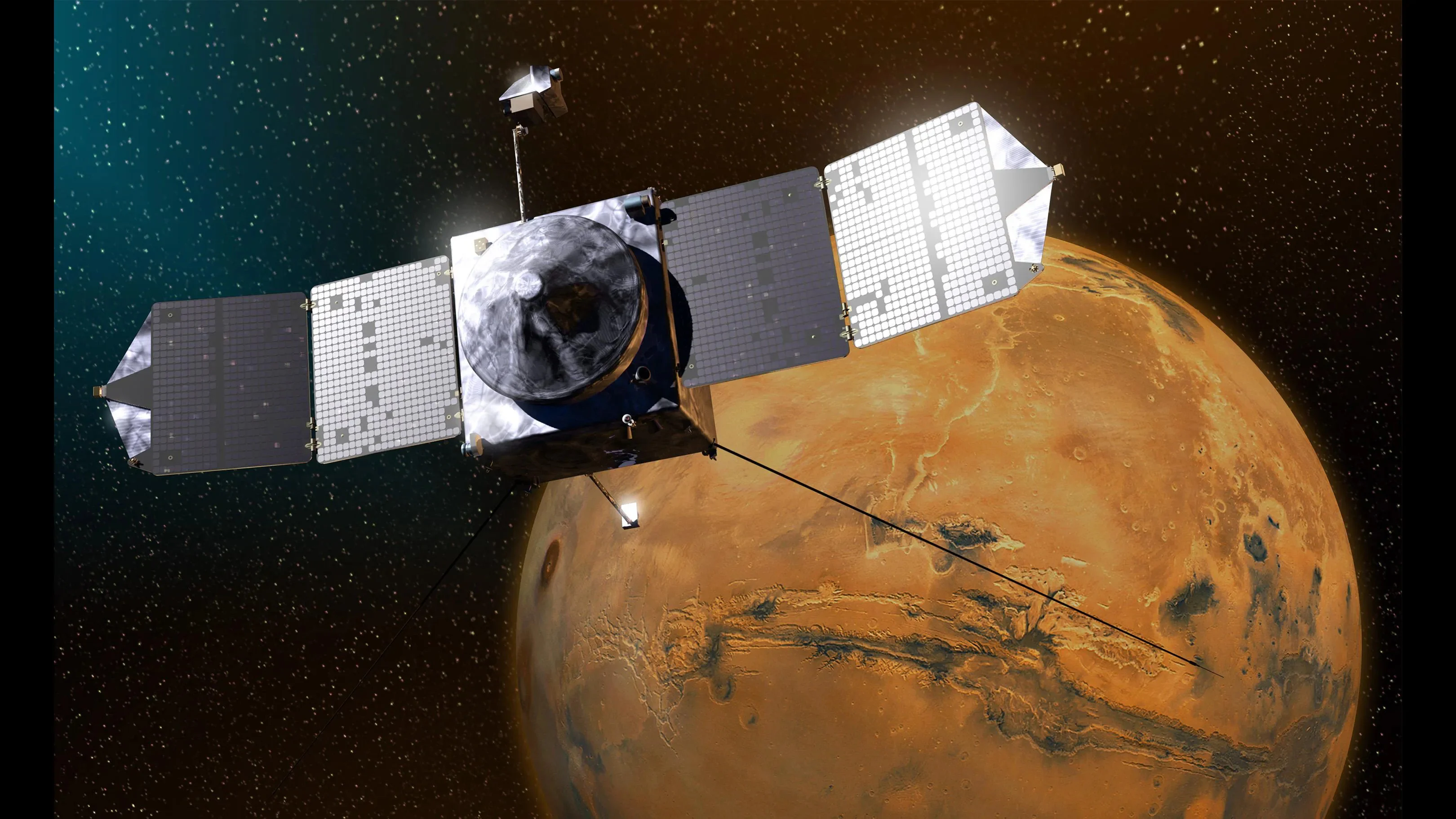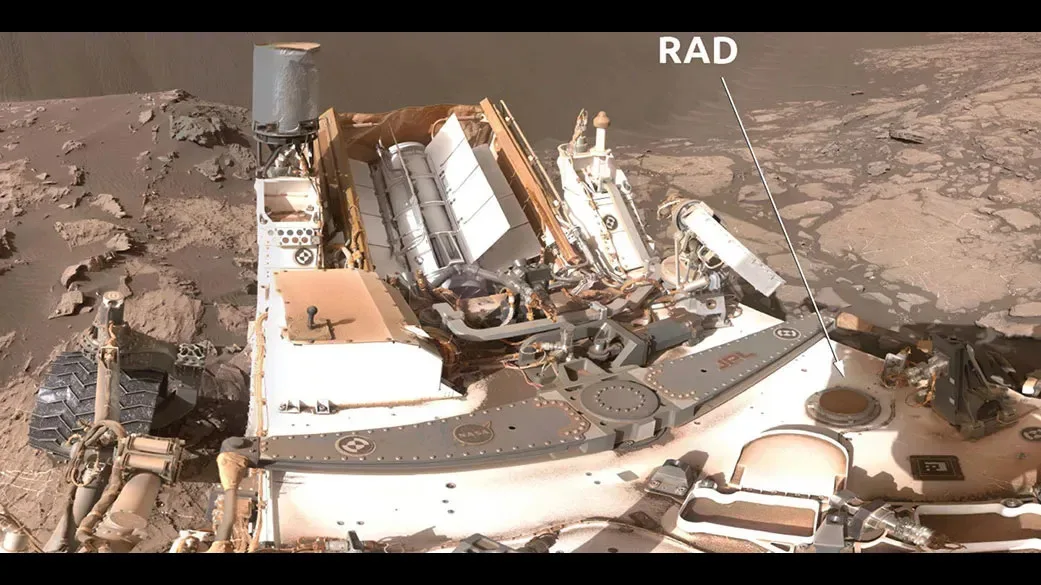
Strongest solar flare since 2017 just blasted out from the Sun
This X8.7-class flare was the strongest seen so far in this solar cycle, and stronger than anything from the Sun in more than 6 years.
The same sunspot complex that caused the bright auroras in our skies last week took a parting shot at us as it slipped around the edge of the Sun. The resulting solar flare was the strongest we've seen so far this cycle, and going all the way back to September 2017.
The Sun's activity is definitely intensifying as we approach the peak of Solar Cycle 25. A perfect example of this was Active Region 3664, an expansive array of sunspots that developed across the face of the Sun during the first two weeks of May.

These three views of the Sun, from May 2, May 7, and May 13, show how AR3664 developed from a barely noticeable blemish on the Sun's surface into a monster sunspot complex. (NASA SDO)
According to SpaceWeatherLive.com, when AR3664 swung into view on May 1, it was composed of just five individual sunspots. As it tracked across it grew to include over 80 sunspots and was several times larger than the Earth.
Between when it first appeared and when it slipped out of sight on May 14, it had emitted more than 60 M-class flares and 11 X-class. Solar flares are ranked from weakest to strongest as B, C, M, or X-class, with each class being 10 times more powerful than the one below. Flares are also ranked within their class using the numbers 1-9, except X-class, where the numbers can climb significantly higher.
The strongest flare from AR3664 — ranked as X8.7-class — was captured around midday on May 14 (Eastern Time), just as this immense sunspot group was disappearing from view.

This view of the Sun is specifically filtered to look for major features — bright active regions, solar flares, coronal mass ejections, and coronal holes — all on the same view. This particular frame captures the X8.7-class flare from May 14, 2024. (NASA SDO)
This is the strongest solar flare we've seen so far in Solar Cycle 25. It is also the strongest solar flare we've seen since September of 2017, a few years before Solar Cycle 24 ended.
Watch out, Mars!!
Dr. Tony Phillips, of spaceweather.com, reported that a coronal mass ejection (CME or solar storm) that erupted as a result of this powerful flare is headed straight for Mars.
"NASA models suggest it should hit Mars on May 17th, potentially sparking global auroras," Phillips wrote.
Since Mars does not have a global magnetic field like Earth, auroras don't occur there in the same way they do here. Instead of appearing as bright colours near the poles, auroras on Mars tend to be in the ultraviolet — invisible to the eye and to rover cameras, but still potentially observed by specific instruments orbiting the planet.

The MAVEN spacecraft orbits Mars, observing radiation, solar particles and how the planet loses its atmosphere to space. (NASA/GSFC)
One of these instruments just happens to be on NASA's MAVEN spacecraft — the Mars Atmosphere and Volatile EvolutioN mission — which is managed by researchers at the University of Colorado's Laboratory for Atmospheric and Space Physics (LASP).
"We're bracing for impact!" Nick Schneider of LASP told spaceweather.com. Schneider is one of the scientists who first characterized these diffuse ultraviolet auroras on Mars, back in 2015.
According to NASA, as MAVEN orbits around Mars during the peak of this solar cycle, the spacecraft will be teaming up with the Curiosity rover on the surface to study how solar flares may impact future human missions to the Red Planet.
"MAVEN observes radiation, solar particles, and more from high above Mars. The planet's thin atmosphere can affect the intensity of the particles by the time they reach the surface, which is where NASA's Curiosity rover comes in," NASA said. "Data from Curiosity's Radiation Assessment Detector, or RAD, has helped scientists understand how radiation breaks down carbon-based molecules on the surface, a process that could affect whether signs of ancient microbial life are preserved there. The instrument has also provided NASA with an idea of how much shielding from radiation astronauts could expect by using caves, lava tubes, or cliff faces for protection."

The location of the Radiation Assessment Detector is indicated on this image taken by the Curiosity rover. (NASA/JPL-Caltech/MSSS)
"When MAVEN detects a big solar flare, the orbiter's team lets the Curiosity team know so they can watch for changes in RAD's data. The two missions can even assemble a time series measuring changes down to the half-second as particles arrive at the Martian atmosphere, interact with it, and eventually strike the surface," NASA explained.
So, even with AR3664 no longer affecting Earth, scientists here may still see some exciting data arrive from their explorers on and around Mars.











